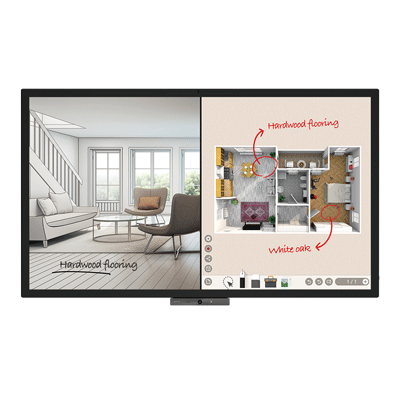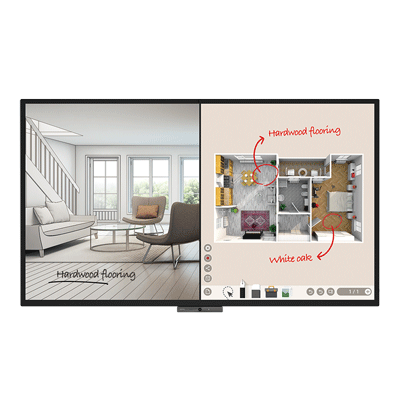How to Choose Smart Meeting Room Solutions for Hybrid Work Situations?
- BenQ
- 2021-03-19
One of the biggest challenges facing businesses and organizations in the so-called post COVID landscape is lack of continuity. Disruptions to workflows due to emergency regulations, reduced global links, and lack of physical employee attendance all cast a long shadow on productivity. However, the rise of hybrid meetings and technologies such as interactive displays offers hope for mitigating the harm caused by the pandemic.
The future of work is hybrid
To grasp the impact of COVID on the way people work, just look at projections for the overall web conference industry’s revenue. It’s expected to be nearly US$80 billion in 2030. That’s up from a tiny US$2.1 billion in 2019. This extreme expansion at nearly 40% CAGR is on track to be one of the most impressive in world business history, based on research by GlobalNewswire. That’s probably because many businesses believe the future of work is hybrid. Organizations of all sizs expect future work to combine remote and in-office attendance by team members, as data collected by the BBC shows.
All of this pivoting to hybrid work means employers need to step up technical capabilities to replace traditional in-office, face to face interaction. Good meetings are vital to maintaining cross-team productivity and collaboration, but if you don’t get the right solutions the first time, chances are you’ll need to purchase more hardware and more tools for your meeting needs, resulting in needless spending and budget overruns
Asses your meeting types before proceeding to procure meeting solutions
Just as with traditional meetings, hybrid work may entail many different types of meetings and gatherings, whether physical or virtual. The most important one is the type of meeting you usually hold. Research by Gartner leads us to recommend that you carefully evaluate your needs and understand the meeting scenarios your organization requires before proceeding to procure meeting solutions.
Several meeting and collaboration archetypes emerge, and you can prioritize your purchases based on the ones that apply to your circumstances.
Internal collaboration: very spontaneous and even "huddle"-centric. Flexible and diverse, this approach relies on constant cloud access, high speed internet connections, and smooth telephony. Meeting scale is usually small, with a lot of one on one or one on three and such. But because these meetings are smaller in scale, they’re more frequent, with several per day as businesses that tend towards this model are very dynamic and collaborative. Factors to consider are how many of your team members are most comfortable with remote collaboration and how often do small meetings need to quickly expand and include more participants, hence becoming large meetings.
Learning and training: more one-sided, as the flow is from instructors to learners or trainees that are acquiring new skills. Of course, learners need to be able to ask questions and get answers, so tools must support this function. While collaboration is still important, you also need the ability to record sessions for future reference. Surveys, polls, and grading are other attributes to consider. Most often used by training divisions and advisory personnel.
External presentations: designed for meetings with clients, prospects, and partners. Basically, whenever you need to meet with people external to your organization, must provide quick response and agility. No need for complex tools here, just excellent connectivity from anywhere, plus fast access to content. This could be as little as a browser that lets you log in to cloud accounts, plus video and voice calls. Most applicable to sales and marketing teams that interact with external contacts.
Mass broadcast: largest meeting type and the most technically demanding. Here, presenters face big audiences and need to have extensive controls over the content being shared. Scalability is also important, as sometimes the audience will be a few dozen people, and at other times a few hundred – or even more when dealing with company-wide presentations. Professional webinars fall under this category, and often have top executives presenting to entire teams or even whole organizations. Therefore, the tools used must ensure a very polished, consistent experience. Scenarios may include shareholder meetings and team member town hall sessions.
Pure work from home: in this scenario, all of your teams work from home and no one comes in to the office. Your tech backbone must be compatible with myriad devices, from smartphones to desktops, Windows to Mac and Linux. You also need to accommodate variable connection speeds. All of that means you need to create some focal point via meeting solutions that work with everyone, everywhere, while having minimal IT demands and almost no learning curve.
One company or organization may need more than one type of meeting, but regardless of which ones you believe apply to you, all have to support effective and collaborative meetings that replace the face to face conduct we were more used to before the pandemic.


